Information and Communication Technology or ICTs allow users to participate in a rapidly changing world in which work and other activities are increasingly transformed by access to varied and developing technologies. The Indian Information Technology and industry accounts for a 5.9% of the country's GDP and export earnings as of 2009, while providing employment to a significant number of its tertiary sector workforce. More than 2.3 million people are employed in the sector either directly or indirectly, making it one of the biggest job creators in India and a mainstay of the national economy.

Use of ICT
ICT tools can be used to find, explore, analyze, exchange and present information responsibly and without discrimination. ICT can be employed to give users quick access to ideas and experiences from a wide range of people, communities and cultures.
ICT in Education
Realising the importance of Information and Communication Technology (ICT) the Ministry of Human Resource Development as per the Mission Document, ICT is the tool in education available to enhance the current enrolment rate in Higher Education, at present 15 percent to 30 percent by the end of the 11th Plan period.
The Ministry also launched a web portal named ÔÇ£SAKSHATÔÇØ a ÔÇÿOne Stop Education PortalÔÇÖ. The high quality e-content once developed will be uploaded on SAKSHAT in all disciplines and subjects. Several projects are in the completion stage and are expected to change the way teaching and learning is done in India.
The case in point is the project, ÔÇ£Developing suitable pedagogical methods for various classes, intellectual calibres and research in e-learning,ÔÇØ anchored by IIT Kharagpur. Faculties from all the IITs and several NITs are participating in this curriculum development project.
The National Mission on Education through Information and Communication Technology (ICT) has, under its aegis, created Virtual Labs, Open Source and Access Tools, Virtual Conference Tools, Talk to Teacher programs, a Non-Invasive Blood Glucometer and also for simulated lab experiments, a Di. Electric frequency shift application development of resonator for low cost oscillators.
The National Mission on Education through Information and Communication Technology (ICT) has been envisaged as a Centrally Sponsored Scheme to leverage the potential of ICT, in providing high quality personalized and interactive knowledge modules over the internet/intranet for all the learners in Higher Education Institutions in any time any where mode. This is expected to be a major intervention in enhancing the Gross Enrolment Ratio (GER) in Higher Education by 5 percentage points during the XI Five Year Plan period and in ensuring access and equity in Higher Education.
The Mission has two major components viz., (a) content generation and (b) connectivity along with provision for access devices for institutions and learners. It seeks to bR&Dge the digital divide, i.e., the gap in the skills to use computing devices for the purpose of teaching and learning among urban and rural teachers/learners in Higher Education domain and empower those, who have hitherto remained untouched by the digital revolution and have not been able to join the mainstream of the knowledge economy. It plans to focus on appropriate pedagogy for e-learning, providing facility of performing experiments through virtual laboratories, on-line testing and certification, on-line availability of teachers to guide and mentor learners, utilization of available Education Satellite (EduSAT) and Direct to Home (DTH) platforms, training and empowerment of teachers to effectively use the new method of teaching learning etc.
On the one hand, the Mission would create high quality e-content for the target groups and on the other, it would simultaneously seek to extend computer infrastructure and connectivity to over 18000 colleges in the country including each of the departments of nearly 400 universities/deemed universities and institutions of national importance. The peer group assisted content development would utilise the Wikipedia type of collaborative platform under the supervision of a content advisory committee responsible for vetting the content. Interactivity and problem solving approach would be addressed through ÔÇ£Talk to a TeacherÔÇØ segment.
Important links
Information Technology
The Indian Information Technology and industry accounts for a 5.9% of the country's GDP and export earnings as of 2009, while providing employment to a significant number of its tertiary sector workforce. More than 2.3 million people are employed in the sector either directly or indirectly, making it one of the biggest job creators in India and a mainstay of the national economy.
In March 2009, annual revenues from outsourcing operations in India amounted to US$60 billion and this is expected to increase to US$225 billion by 2020. The most prominent IT hub is IT capital Bangalore. The other emerging destinations are Chennai, Hyderabad, Pune, NCR and Kolkata. Technically proficient immigrants from India sought jobs in the western world from the 1950s onwards as India's education system produced more engineers than its industry could absorb. India's growing stature in the information age enabled it to form close ties with both the United States of America and the European Union.

Each year India produces roughly 800,000 engineers in the country, out of them 25% to 30% possess both technical competency and English language skills, although 10% of India's population can speak in English. India has developed a number of outsourcing companies specializing in customer support via Internet or telephone connections.
By 2009, India also has a total of 37,160,000 telephone lines in use, a total of 506,040,000 mobile phone connections, a total of 81,000,000 Internet usersÔÇöcomprising 7.0% of the country's population, and 7,570,000 people in the country have access to broadband InternetÔÇö making it the 12th largest country in the world in terms of broadband Internet users. Total fixed-line and wireless subscribers reached 543.20 million as of November, 2009.
The Indian telecommunication industry, with about 525 million mobile phone connections (Dec 2009), is the third largest telecommunication network in the world and the second largest in terms of number of wireless connections. The Indian telecom industry is one of the fastest growing in the world and is projected that India will have 'billion plus' mobile users by 2015. Projection by several leading global consultancies is that IndiaÔÇÖs telecom network will overtake ChinaÔÇÖs in the next 10 years. For the past decade or so, telecommunication activities have gained momentum in India. Efforts have been made from both governmental and non-governmental platforms to enhance the infrastructure. The idea is to help modern telecommunication technologies to serve all segments of IndiaÔÇÖs culturally diverse society, and to transform it into a country of technologically enabled people.



